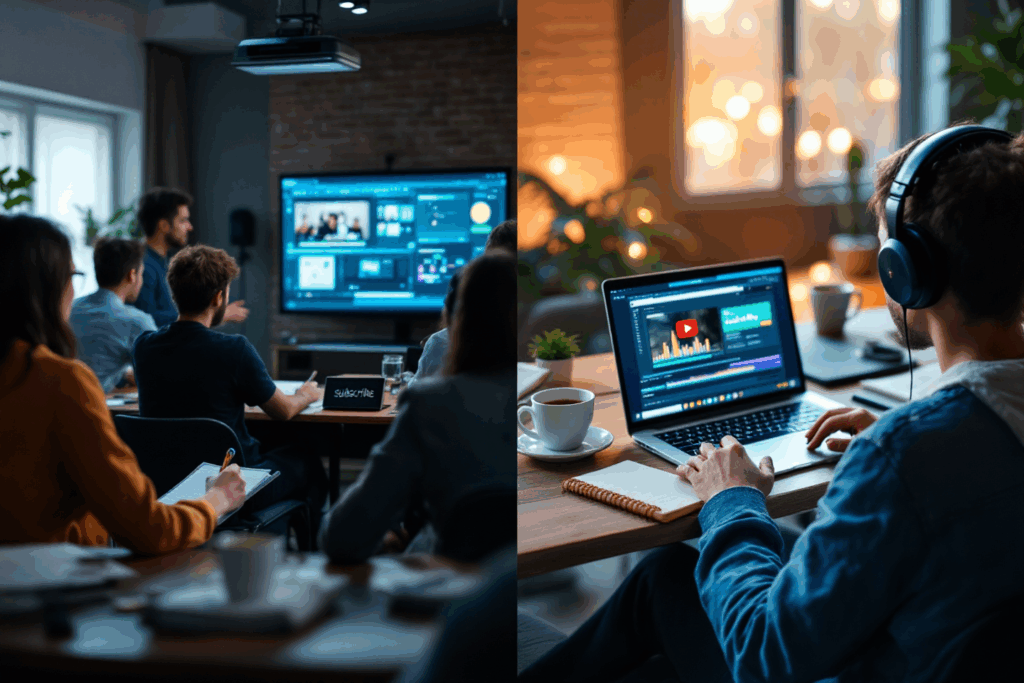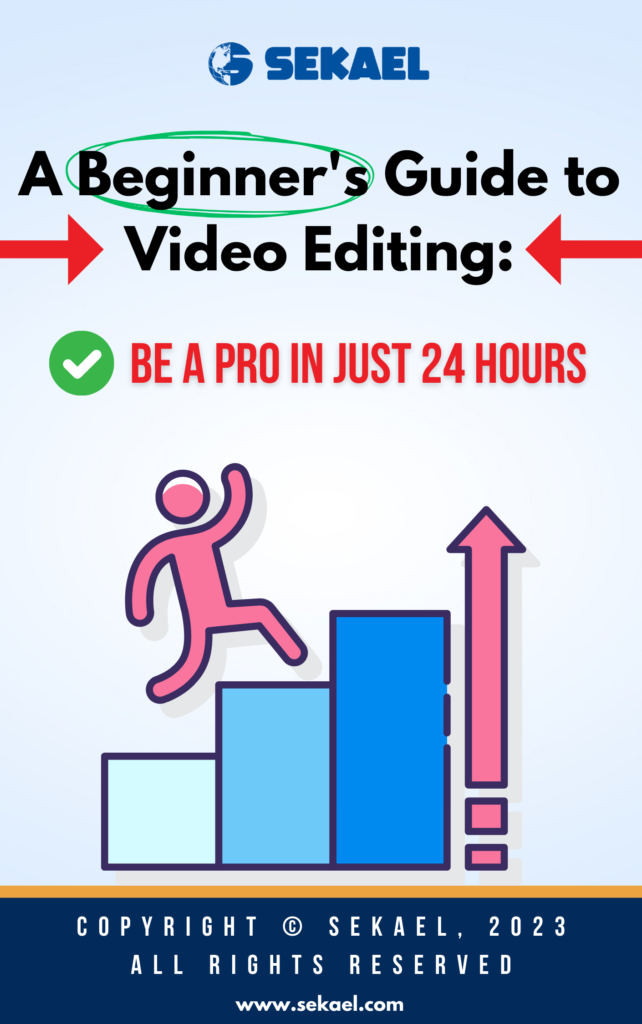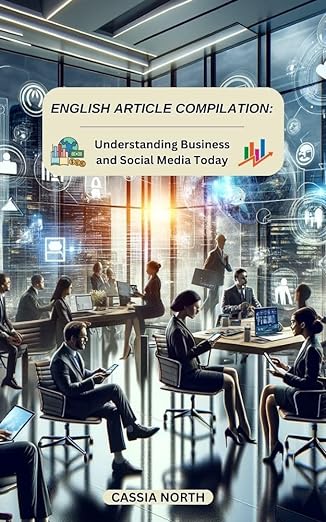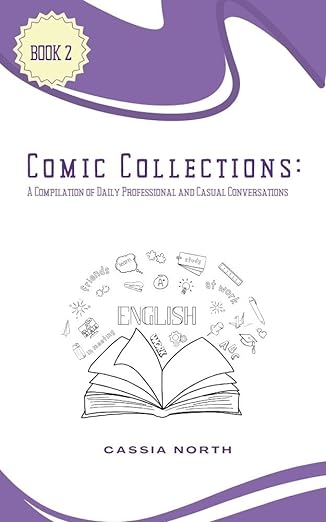
Video Editing Blogs
"Let's Learn, Explore, and Connect to the World"
Learning Video Editing: School vs. Online Courses
- Tokita Akira

Introduction

In the rapidly evolving world of digital media, video editing has emerged as a skill in high demand. Whether it’s for filmmaking, marketing, content creation, or social media, the ability to craft compelling visual stories is more valuable than ever. For aspiring video editors, one critical question often arises: How should one study video editing? Is it better to enroll in a traditional school or are online courses sufficient?
This article aims to explore the two primary pathways to learning video editing: traditional school-based education and online learning platforms. Both avenues offer unique advantages and come with their own set of challenges. We will delve into the benefits and drawbacks of each, helping you decide which path aligns best with your learning preferences, career objectives, and available resources.
As the demand for skilled video editors continues to grow, understanding the most effective way to acquire these skills becomes crucial. Whether you dream of working in a major film studio, excelling in a corporate environment, or freelancing, the journey begins with education. Let’s compare and contrast these learning methods to help you embark on a path that suits your aspirations in the world of video editing.
Traditional School-Based Learning for Video Editing
For many aspiring video editors, attending a traditional school, such as a university or technical college, is a preferred route. This path offers a structured educational experience. Let’s explore the advantages and disadvantages:
Advantages

- Structured Curriculum: Traditional schools typically offer a well-designed curriculum that covers a wide range of topics, from the basics of video editing to advanced techniques, ensuring a comprehensive education.
- Hands-On Experience: Many schools provide access to professional-grade equipment and software, giving students the opportunity to gain practical experience in a controlled environment.
- Networking Opportunities: Being part of a school community allows students to connect with peers, educators, and visiting professionals, offering valuable networking opportunities that can be beneficial in their future careers.
- Accreditation and Certification: Completing a program from a recognized institution often results in a degree or certification, which can be advantageous when seeking employment, as it validates your education to employers.
Disadvantages

- Cost: One of the significant drawbacks of traditional schooling is the cost. Tuition fees can be high, and there may be additional expenses for resources and equipment.
- Location and Accessibility: Traditional education often requires physical attendance, which can be a limitation for those who do not have easy access to such institutions or who cannot relocate.
- Rigidity: School programs usually have fixed schedules and curriculums, offering less flexibility compared to online courses, which can be a challenge for those who need to balance studies with other responsibilities.
Traditional school-based learning offers a comprehensive and immersive educational experience but requires a significant commitment in terms of time, money, and often location.
Online Learning for Video Editing
Online learning platforms have revolutionized how we acquire new skills, including video editing. They offer an accessible, flexible, and often more affordable way to learn. Let’s examine the pros and cons:
Advantages

- Flexibility and Convenience: One of the biggest draws of online learning is the flexibility it offers. Students can learn at their own pace and on their own schedule, which is ideal for those balancing other commitments.
- Variety of Resources: There is a vast array of online courses available, ranging from beginner to advanced levels, and covering various styles and techniques in video editing. This variety allows learners to choose courses that best fit their interests and skill levels.
- Cost-Effective: Online courses are generally more affordable than traditional school programs. Many platforms also offer free trials, and there are numerous free resources available for beginners.
- Up-to-Date Content: Online courses are often updated more frequently than traditional school curriculums, ensuring that learners are getting the most current information and learning the latest techniques.
Disadvantages

- Self-Discipline Required: The flexibility of online learning requires a high degree of self-motivation and discipline. Without the structure of a traditional classroom, some learners might find it challenging to keep up with their studies.
- Limited Hands-On Experience: While online courses provide theoretical knowledge and demonstrations, they often lack the hands-on experience of using professional equipment, which can be a crucial part of learning video editing.
- Networking Challenges: Unlike traditional schools, online courses offer fewer opportunities for face-to-face networking with peers and industry professionals, which can be a vital part of building a career.
- Online learning platforms provide an accessible and flexible way to gain video editing skills, especially beneficial for self-motivated learners and those seeking to learn specific skills or techniques.
Blended Learning Approach
A blended learning approach can offer the best of both worlds, combining the structured, interactive environment of traditional schooling with the flexibility and accessibility of online courses. Here’s how a blended approach can be beneficial for learning video editing:
Combining Resources and Experiences

- Structured Learning with Flexibility: Blended learning allows students to benefit from the structured curriculum of traditional schooling while enjoying the flexibility of supplementing their education with online resources.
- Access to Equipment and Online Resources: Students can gain hands-on experience with professional equipment in a traditional school setting, while also accessing a wide variety of online tutorials and courses to enhance their learning.
- Networking and Online Community Engagement: Blended learning provides opportunities for in-person networking, essential in the video editing industry, and encourages participation in online communities and forums for broader engagement.
Implementing Blended Learning

- Enrolling in Hybrid Programs: Some educational institutions offer hybrid programs that combine in-person classes with online coursework, providing a comprehensive learning experience.
- Self-Directed Blended Learning: Learners can also create their own blended learning experience by enrolling in a traditional course while independently seeking out online resources and tutorials to supplement their education.
- Workshops and Online Follow-up: Attending workshops or short courses for hands-on experience, followed by online courses for further study and practice, can be an effective blended learning strategy.
A blended learning approach in video editing allows learners to tailor their educational journey to their individual needs, taking advantage of both traditional and digital learning platforms.
Conclusion

Choosing between traditional school and online learning for video editing depends on various factors, including your personal learning style, schedule flexibility, budget, and career goals. Traditional schools offer a structured, immersive experience with hands-on training and networking opportunities, while online courses provide flexibility, a wide range of learning materials, and are often more budget-friendly.
For many, a blended approach that combines the strengths of both methods could be the most effective way to learn video editing. It allows for a customizable learning experience that can adapt to changing needs and goals.
In the end, whether you choose traditional schooling, online courses, or a mix of both, the key is to stay committed to learning, practicing, and continuously developing your skills in the ever-evolving field of video editing.
Check out our books and more!
A Beginner's Guide to Video Editing: Be a Pro in Just 24 Hours
Discover your inner editing abilities with this complete guide made for beginners to master the art of video editing smoothly. ‘A Beginner’s Guide to Video Editing: Be a Pro in Just 24 Hours’ is your way to discover the secrets of professional-grade editing within a day.



















 Freelance Video Editing:
Freelance Video Editing: Full-Time Video Editing Jobs: Full-time positions provide a steady income and often come with additional benefits like health insurance, paid vacation, and retirement plans. Salaries for full-time positions can vary based on the company, industry, and location. Full-time roles also offer career development opportunities and a more stable work environment.
Full-Time Video Editing Jobs: Full-time positions provide a steady income and often come with additional benefits like health insurance, paid vacation, and retirement plans. Salaries for full-time positions can vary based on the company, industry, and location. Full-time roles also offer career development opportunities and a more stable work environment. Making the Choice: The decision between freelancing and full-time employment depends on personal preferences, career goals, and tolerance for income variability. Some video editors may start freelancing and transition into full-time roles, or vice versa, depending on their career progression and life circumstances.
Making the Choice: The decision between freelancing and full-time employment depends on personal preferences, career goals, and tolerance for income variability. Some video editors may start freelancing and transition into full-time roles, or vice versa, depending on their career progression and life circumstances.
 Embarking on a career in video editing presents a world of opportunities, and understanding the salary landscape is an essential part of this journey. As we’ve explored, video editing salaries vary significantly across different countries, influenced by factors such as the cost of living, industry demand, and the editor’s experience and skill set.
Embarking on a career in video editing presents a world of opportunities, and understanding the salary landscape is an essential part of this journey. As we’ve explored, video editing salaries vary significantly across different countries, influenced by factors such as the cost of living, industry demand, and the editor’s experience and skill set. Finally, remember that the field of video editing is continually evolving. Staying updated with industry trends, continuously enhancing your skills, and understanding your worth are crucial to advancing in this career and negotiating fair compensation.
Finally, remember that the field of video editing is continually evolving. Staying updated with industry trends, continuously enhancing your skills, and understanding your worth are crucial to advancing in this career and negotiating fair compensation.

 Daily Conversations: Incorporate the Present Perfect Continuous into your daily conversations, focusing on actions that have been happening over a period of time.
Daily Conversations: Incorporate the Present Perfect Continuous into your daily conversations, focusing on actions that have been happening over a period of time. Writing Diaries: Write diary entries or journal posts using the tense to describe ongoing activities or changes in your life.
Writing Diaries: Write diary entries or journal posts using the tense to describe ongoing activities or changes in your life. Role-playing Scenarios: Engage in role-play exercises that involve scenarios requiring the use of the Present Perfect Continuous, such as discussing ongoing projects or life changes.
Role-playing Scenarios: Engage in role-play exercises that involve scenarios requiring the use of the Present Perfect Continuous, such as discussing ongoing projects or life changes. Discussion Groups: Participate in English discussion groups or language exchange meetups where you can practice speaking about ongoing actions or experiences using this tense.
Discussion Groups: Participate in English discussion groups or language exchange meetups where you can practice speaking about ongoing actions or experiences using this tense. Debates and Discussions: Join debates or group discussions on topics like environmental changes, personal development, or current events, using the Present Perfect Continuous to express ongoing developments or effects.
Debates and Discussions: Join debates or group discussions on topics like environmental changes, personal development, or current events, using the Present Perfect Continuous to express ongoing developments or effects. Reflective Writing: Reflect on your personal experiences, hobbies, or professional skills that have been developing over time, using the Present Perfect Continuous to emphasize their progression.
Reflective Writing: Reflect on your personal experiences, hobbies, or professional skills that have been developing over time, using the Present Perfect Continuous to emphasize their progression. Creative Stories: Write short stories or narratives where characters are involved in long-term actions or experiences, employing the tense to add depth to the storyline.
Creative Stories: Write short stories or narratives where characters are involved in long-term actions or experiences, employing the tense to add depth to the storyline. Podcasts and Audiobooks: Listen to English-language podcasts or audiobooks, paying special attention to contexts where the Present Perfect Continuous is used.
Podcasts and Audiobooks: Listen to English-language podcasts or audiobooks, paying special attention to contexts where the Present Perfect Continuous is used. Movies and TV Shows: Watch movies and TV shows in English, focusing on dialogues that incorporate the Present Perfect Continuous, especially in scenes depicting ongoing actions or events.
Movies and TV Shows: Watch movies and TV shows in English, focusing on dialogues that incorporate the Present Perfect Continuous, especially in scenes depicting ongoing actions or events. Blogging: If you maintain a blog, write posts about your ongoing experiences or projects using the Present Perfect Continuous.
Blogging: If you maintain a blog, write posts about your ongoing experiences or projects using the Present Perfect Continuous. Story Development: Create stories focusing on characters with long-term goals or challenges, using the tense to convey the continuity of their experiences and actions.
Story Development: Create stories focusing on characters with long-term goals or challenges, using the tense to convey the continuity of their experiences and actions. Expanding your practice with the Present Perfect Continuous through a variety of activities and resources is key to mastering its use. Regular practice in speaking, writing, and comprehension will enhance your ability to effectively use this tense, enriching your overall communication skills in English.
Expanding your practice with the Present Perfect Continuous through a variety of activities and resources is key to mastering its use. Regular practice in speaking, writing, and comprehension will enhance your ability to effectively use this tense, enriching your overall communication skills in English.








 Emphasize Duration: Use this tense to emphasize the duration of an ongoing action, especially when the length of time is significant or relevant to the conversation.
Emphasize Duration: Use this tense to emphasize the duration of an ongoing action, especially when the length of time is significant or relevant to the conversation. Highlight Ongoing Nature: Choose the Present Perfect Continuous to highlight the ongoing nature of an action that started in the past and is still continuing.
Highlight Ongoing Nature: Choose the Present Perfect Continuous to highlight the ongoing nature of an action that started in the past and is still continuing. Combine with Time Expressions: Familiarize yourself with time expressions commonly used with this tense, like ‘for’, ‘since’, ‘lately’, and ‘recently’.
Combine with Time Expressions: Familiarize yourself with time expressions commonly used with this tense, like ‘for’, ‘since’, ‘lately’, and ‘recently’.
 Regular Practice: Integrate the Present Perfect Continuous into daily conversations, focusing on actions that are currently ongoing or were recently completed.
Regular Practice: Integrate the Present Perfect Continuous into daily conversations, focusing on actions that are currently ongoing or were recently completed. Writing Exercises: Write about your recent activities or ongoing projects using the Present Perfect Continuous to emphasize duration and continuity.
Writing Exercises: Write about your recent activities or ongoing projects using the Present Perfect Continuous to emphasize duration and continuity. Listening Comprehension: Listen for the use of the Present Perfect Continuous in podcasts, movies, and conversations to understand its application in various contexts.
Listening Comprehension: Listen for the use of the Present Perfect Continuous in podcasts, movies, and conversations to understand its application in various contexts. The Present Perfect Continuous is a dynamic and expressive tense that adds depth to your English communication, especially when discussing actions over time. By understanding its proper use, common mistakes, and through regular practice, your proficiency and comfort in using this tense will significantly improve, enriching your overall English language skills.
The Present Perfect Continuous is a dynamic and expressive tense that adds depth to your English communication, especially when discussing actions over time. By understanding its proper use, common mistakes, and through regular practice, your proficiency and comfort in using this tense will significantly improve, enriching your overall English language skills.












 Effectively forming questions and negatives in the Present Perfect Continuous is crucial for asking about ongoing actions, their durations, or negating continuous states or actions. This skill enhances your ability to engage in more dynamic conversations, particularly when discussing actions that have been ongoing and are still relevant in the present.
Effectively forming questions and negatives in the Present Perfect Continuous is crucial for asking about ongoing actions, their durations, or negating continuous states or actions. This skill enhances your ability to engage in more dynamic conversations, particularly when discussing actions that have been ongoing and are still relevant in the present.









 The Present Perfect Continuous tense offers a dynamic way to talk about ongoing actions and their durations, temporary states, and cause-effect relationships. Its mastery is crucial for eloquently expressing continuous actions and their relevance to the present moment. In the next sections, we will explore forming questions and negatives, along with practical tips for usage.
The Present Perfect Continuous tense offers a dynamic way to talk about ongoing actions and their durations, temporary states, and cause-effect relationships. Its mastery is crucial for eloquently expressing continuous actions and their relevance to the present moment. In the next sections, we will explore forming questions and negatives, along with practical tips for usage.


 The Present Perfect Continuous tense is a fascinating aspect of English grammar that focuses on actions or situations that began in the past and are still continuing in the present. This tense not only conveys the action but also emphasizes the duration or ongoing nature of that action.
The Present Perfect Continuous tense is a fascinating aspect of English grammar that focuses on actions or situations that began in the past and are still continuing in the present. This tense not only conveys the action but also emphasizes the duration or ongoing nature of that action.

 Understanding the Present Perfect Continuous requires a grasp of the correct use of ‘has’ and ‘have’, which depends on the subject. ‘Has’ is used with singular subjects, while ‘have’ is used with plural subjects and the pronouns ‘I’ and ‘you’.
Understanding the Present Perfect Continuous requires a grasp of the correct use of ‘has’ and ‘have’, which depends on the subject. ‘Has’ is used with singular subjects, while ‘have’ is used with plural subjects and the pronouns ‘I’ and ‘you’. This tense is particularly useful for expressing the duration of actions that are not yet complete or whose effects are still relevant. It’s a tense that adds depth to the understanding of actions, focusing on the process rather than just the outcome.
This tense is particularly useful for expressing the duration of actions that are not yet complete or whose effects are still relevant. It’s a tense that adds depth to the understanding of actions, focusing on the process rather than just the outcome. Differentiating the Present Perfect Continuous from similar tenses, such as the Present Perfect Simple or the Past Continuous, is crucial. While the Present Perfect Simple focuses on the completion of an action, the Present Perfect Continuous emphasizes the ongoing nature and duration of the action.
Differentiating the Present Perfect Continuous from similar tenses, such as the Present Perfect Simple or the Past Continuous, is crucial. While the Present Perfect Simple focuses on the completion of an action, the Present Perfect Continuous emphasizes the ongoing nature and duration of the action. The Present Perfect Continuous is a key tense for advanced English expression, offering a nuanced way to talk about ongoing actions and their duration. Its mastery enhances the ability to convey detailed aspects of time and action, making communication more effective and precise. In the next sections, we will delve into its uses, forming questions and negatives, and practical tips for its usage.
The Present Perfect Continuous is a key tense for advanced English expression, offering a nuanced way to talk about ongoing actions and their duration. Its mastery enhances the ability to convey detailed aspects of time and action, making communication more effective and precise. In the next sections, we will delve into its uses, forming questions and negatives, and practical tips for its usage.


 At the heart of the Present Perfect Continuous is the concept of duration and ongoing action. It is used to indicate actions that began in the past and have continued up to the present moment. This tense is not just about what has happened; it’s about the process and the ongoing nature of actions and events. It allows speakers to emphasize the duration of an action, often giving a sense of development or progression.
At the heart of the Present Perfect Continuous is the concept of duration and ongoing action. It is used to indicate actions that began in the past and have continued up to the present moment. This tense is not just about what has happened; it’s about the process and the ongoing nature of actions and events. It allows speakers to emphasize the duration of an action, often giving a sense of development or progression. One of the unique features of the Present Perfect Continuous is its ability to bridge past actions with the present. Unlike the simple past, which detaches actions from the present, this tense keeps them relevant by focusing on their ongoing impact or continuation. It is a tense that is deeply rooted in the here and now, even as it reaches back into the past.
One of the unique features of the Present Perfect Continuous is its ability to bridge past actions with the present. Unlike the simple past, which detaches actions from the present, this tense keeps them relevant by focusing on their ongoing impact or continuation. It is a tense that is deeply rooted in the here and now, even as it reaches back into the past. The Present Perfect Continuous is crucial in English communication for its ability to express actions in a way that simple past or present tenses cannot. It adds depth to conversations about experiences, ongoing projects, or situations that are evolving over time. Mastery of this tense allows for more nuanced and precise expression, especially in scenarios where the duration and continuity of actions are important.
The Present Perfect Continuous is crucial in English communication for its ability to express actions in a way that simple past or present tenses cannot. It adds depth to conversations about experiences, ongoing projects, or situations that are evolving over time. Mastery of this tense allows for more nuanced and precise expression, especially in scenarios where the duration and continuity of actions are important. For learners of English, understanding and mastering the Present Perfect Continuous can be challenging due to its unique structure and use. However, it also presents an opportunity to delve deeper into the complexities of English and to enhance one’s ability to communicate more precisely about time and action.
For learners of English, understanding and mastering the Present Perfect Continuous can be challenging due to its unique structure and use. However, it also presents an opportunity to delve deeper into the complexities of English and to enhance one’s ability to communicate more precisely about time and action. The Present Perfect Continuous tense is more than just a grammatical rule; it’s a vital tool for expressing ongoing actions and experiences in relation to the present. Its mastery is crucial for anyone looking to articulate the nuances of time and continuity in English. As we dive deeper into this tense, we will explore its formation, uses, and the nuances that make it an indispensable part of effective communication.
The Present Perfect Continuous tense is more than just a grammatical rule; it’s a vital tool for expressing ongoing actions and experiences in relation to the present. Its mastery is crucial for anyone looking to articulate the nuances of time and continuity in English. As we dive deeper into this tense, we will explore its formation, uses, and the nuances that make it an indispensable part of effective communication.

 Daily Journaling: Incorporate the Present Perfect Simple in your daily journal entries. Write about new experiences, achievements, or changes in your life.
Daily Journaling: Incorporate the Present Perfect Simple in your daily journal entries. Write about new experiences, achievements, or changes in your life. Scenario-Based Role Play: Engage in role-playing exercises with scenarios that involve discussing past experiences, accomplishments, or changes.
Scenario-Based Role Play: Engage in role-playing exercises with scenarios that involve discussing past experiences, accomplishments, or changes. Present Perfect Challenges: Set daily or weekly challenges where you focus on using the Present Perfect Simple in conversations or writing.
Present Perfect Challenges: Set daily or weekly challenges where you focus on using the Present Perfect Simple in conversations or writing. Conversation Practice: During conversations, try to narrate recent experiences or changes using the Present Perfect Simple. Discuss things like recent accomplishments, life changes, or new experiences.
Conversation Practice: During conversations, try to narrate recent experiences or changes using the Present Perfect Simple. Discuss things like recent accomplishments, life changes, or new experiences. Experience Sharing: Write about your life experiences, such as trips, achievements, or significant life changes, using the Present Perfect Simple.
Experience Sharing: Write about your life experiences, such as trips, achievements, or significant life changes, using the Present Perfect Simple. Reflective Essays: Write essays reflecting on how certain aspects of your life or the world have changed over time.
Reflective Essays: Write essays reflecting on how certain aspects of your life or the world have changed over time. Podcasts and Audiobooks: Listen to podcasts or audiobooks where hosts often discuss experiences, news, and life stories. Focus on how they use the Present Perfect Simple tense.
Podcasts and Audiobooks: Listen to podcasts or audiobooks where hosts often discuss experiences, news, and life stories. Focus on how they use the Present Perfect Simple tense. Movies and TV Shows: Watch films and series in English, paying close attention to dialogues that use the Present Perfect Simple, especially in narratives involving life experiences or changes.
Movies and TV Shows: Watch films and series in English, paying close attention to dialogues that use the Present Perfect Simple, especially in narratives involving life experiences or changes. Storytelling: Create stories where characters discuss their past experiences or how their lives have changed, using the Present Perfect Simple tense.
Storytelling: Create stories where characters discuss their past experiences or how their lives have changed, using the Present Perfect Simple tense. Blogging: If you have a blog, write posts about your personal experiences, accomplishments, or changes using the Present Perfect Simple.
Blogging: If you have a blog, write posts about your personal experiences, accomplishments, or changes using the Present Perfect Simple. Expanding your practice with the Present Perfect Simple through diverse exercises and real-life application is key to mastering its use. Consistent practice, whether through speaking, writing, listening, or engaging with educational resources, will enhance your ability to use this tense effectively, enriching your overall English communication skills.
Expanding your practice with the Present Perfect Simple through diverse exercises and real-life application is key to mastering its use. Consistent practice, whether through speaking, writing, listening, or engaging with educational resources, will enhance your ability to use this tense effectively, enriching your overall English communication skills.

 In the dynamic world of digital media, video editing has emerged as a skill in high demand. With the proliferation of online content, advertising, and corporate branding increasingly reliant on video, the need for skilled video editors has never been greater. However, for beginners armed with video editing skills, the question often arises: How does one break into this competitive field and land a job?
In the dynamic world of digital media, video editing has emerged as a skill in high demand. With the proliferation of online content, advertising, and corporate branding increasingly reliant on video, the need for skilled video editors has never been greater. However, for beginners armed with video editing skills, the question often arises: How does one break into this competitive field and land a job? This article is crafted to guide you, the aspiring video editor, on your journey to securing a position in this exciting and evolving industry. Whether you dream of cutting trailers for the next blockbuster movie, crafting compelling advertisements, or producing engaging content for digital platforms, understanding the pathway to employment is key. We’ll explore the landscape of the video editing job market, offer tips on building a strong foundational skill set, and provide practical advice on creating a portfolio, gaining experience, and navigating the job application process.
This article is crafted to guide you, the aspiring video editor, on your journey to securing a position in this exciting and evolving industry. Whether you dream of cutting trailers for the next blockbuster movie, crafting compelling advertisements, or producing engaging content for digital platforms, understanding the pathway to employment is key. We’ll explore the landscape of the video editing job market, offer tips on building a strong foundational skill set, and provide practical advice on creating a portfolio, gaining experience, and navigating the job application process. Types of Employment:
Types of Employment: Industries in Demand:
Industries in Demand: Emerging Trends:
Emerging Trends: Geographical Hotspots:
Geographical Hotspots: Salary Expectations:
Salary Expectations: Required Skills and Qualifications:
Required Skills and Qualifications:
 By building a strong foundation in video editing, you not only enhance your technical abilities but also develop a deeper understanding of the creative aspects of storytelling. This combination of skills is what will make your work stand out to potential employers and clients.
By building a strong foundation in video editing, you not only enhance your technical abilities but also develop a deeper understanding of the creative aspects of storytelling. This combination of skills is what will make your work stand out to potential employers and clients.
 Breaking into the field of video editing often requires not just skill, but also experience and industry exposure. Here are strategies to help you gain valuable experience and make your mark in the video editing world:
Breaking into the field of video editing often requires not just skill, but also experience and industry exposure. Here are strategies to help you gain valuable experience and make your mark in the video editing world: Gaining practical experience and exposure is as important as honing your technical skills. It builds your confidence, expands your professional network, and enhances your resume, making you a more attractive candidate to potential employers.
Gaining practical experience and exposure is as important as honing your technical skills. It builds your confidence, expands your professional network, and enhances your resume, making you a more attractive candidate to potential employers.
 Stay Updated with Software and Tools:
Stay Updated with Software and Tools: Explore Advanced Techniques and Styles:
Explore Advanced Techniques and Styles: Attend Workshops and Industry Conferences:
Attend Workshops and Industry Conferences: Seek Mentorship and Feedback:
Seek Mentorship and Feedback: Pursue Further Education:
Pursue Further Education: Explore New Areas and Niches:
Explore New Areas and Niches: Set Long-Term Goals and Career Path:
Set Long-Term Goals and Career Path: